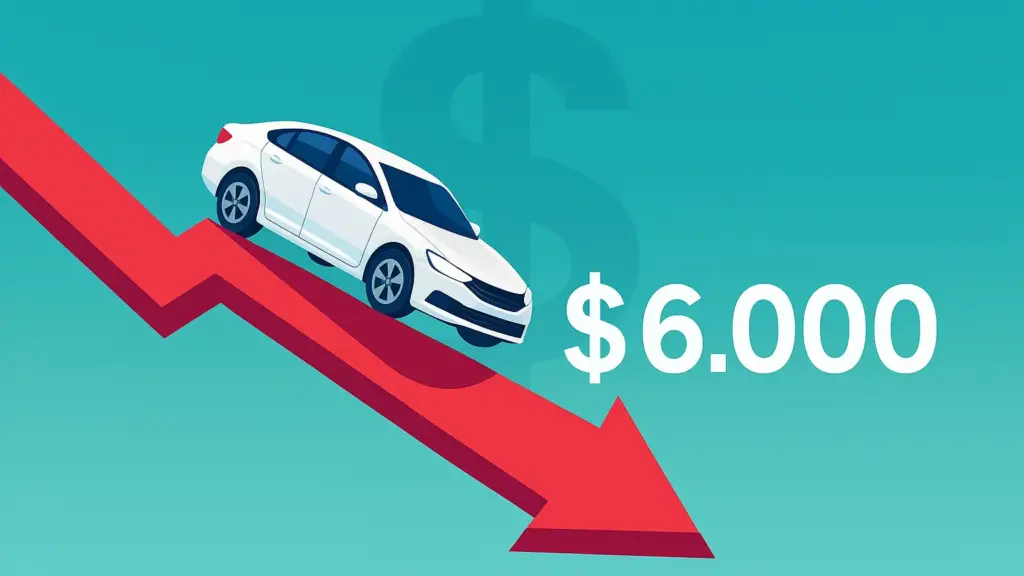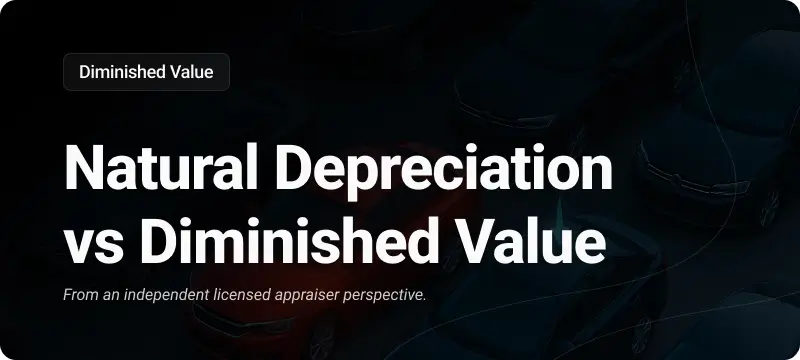If your car’s been in an accident—repaired or not—it’s likely worth less than before. That loss in value is known as diminished value, and it can be claimed as part of your insurance settlement.
In this article, you’ll learn what a diminished value claim is, how it works, and what affects the amount you might receive. Most importantly, we’ll look at real numbers so you can understand the average payout and what to expect. You’ll also get practical tips on how to file a claim and how to make sure you don’t leave money on the table.
Whether you’re dealing with an insurance adjuster now or just preparing for the future, this guide will help you navigate the process with clarity and confidence.
The Factors Influencing Diminished Value
Several key factors determine how much value your vehicle loses after an accident. Understanding these helps you estimate what kind of payout to expect from a diminished value claim.
Here’s what insurers and appraisers typically look at:
- Severity of the Damage More serious collisions lead to higher diminished value. Frame damage, airbag deployment, or major panel replacements can drastically lower a car’s resale appeal—even after professional repairs.
- Age and Mileage of the Vehicle Newer cars with low mileage tend to lose more value because buyers expect them to be in pristine condition. Older cars, or those with high mileage, usually have a lower baseline value—so the loss isn’t as steep.
- Make and Model Luxury, exotic, or limited-edition vehicles typically experience higher diminished value. Buyers in these markets care deeply about clean vehicle history reports. Mainstream models tend to have smaller percentage losses.
- Type and Quality of Repairs Subpar repairs can exaggerate the diminished value. If the paint doesn’t match, panels don’t align, or aftermarket parts were used instead of OEM (Original Equipment Manufacturer) parts, buyers notice—and value drops.
- Use of OEM Parts Using original manufacturer parts generally preserves more value than third-party alternatives. OEM parts are designed to match exact specifications, helping maintain vehicle integrity and buyer trust.
- Geographic Location Diminished value varies by state and even by city. For example, in states where diminished value claims are recognized and common, insurers may pay out more readily. Urban markets may also devalue accident history more than rural areas due to resale competition.
Average Diminished Value Claim Payouts

On average, a diminished value settlement ranges from 10% to 25% of a vehicle’s fair market value before the accident.
The exact amount depends on several factors, including damage severity, vehicle condition, and repair quality, as outlined earlier.
For a quick reference:
- A car with a pre-accident value of $30,000 might have a diminished value claim between $3,000 and $7,500.
- A higher-end vehicle could push closer to the 25% mark, especially if damage was extensive or involved structural components.
Real Customer Example: 2019 Toyota Camry
To give you a practical sense of how this plays out, here’s a real-world case from our files:
| Vehicle | 2019 Toyota Camry XSE 4D Sedan |
|---|---|
| Pre-Loss Market Value | $32,100 |
| Post-Repair Market Value | $29,060 |
| Damage Severity Score | Medium (3 on a scale of 1–5) |
| Repairs | Front and rear damage, 59.7 labor hours, OEM parts used |
| Type of Claim | Third-party claim |
| Repair Cost | $6,621 |
| Total Diminished Value | $3,040 |
This case highlights how even a well-repaired, popular sedan can lose thousands in value after a collision. The appraised diminished value was calculated using a patented formula that considers labor hours, structural impact, and market data
However, many insurance companies still rely on an outdated and flawed formula known as the 17c formula.
This method often results in unfairly low payouts because it doesn’t account for key factors like repair quality, use of OEM parts, geographical impact, or real-world market conditions—all of which were discussed earlier in this article.
To understand why this formula is problematic—and what you can do about it—learn more about the 17c formula and why it’s not fair.
What to Do Next After a Car Accident
If you suspect your car has lost value after being repaired, you’re not alone. Thousands of vehicle owners are in the same position—driving a car that looks fine, but is worth significantly less simply because it has an accident history.
So, what’s your next move?
1. Gather the Right Documents
Before taking further steps, make sure you have:
- The accident or police report
- Complete repair estimates or invoices
- Photos of the damage (if possible)
- Any correspondence with the insurance company
Having these on hand will make the rest of the process smoother and help appraisers give you an accurate evaluation.
2. Not Sure If You Qualify?
You don’t have to guess. Some states allow diminished value claims under specific conditions, and the rules can be confusing. If you’re unsure whether you’re eligible, check out this quick guide: Do I qualify for diminished value?
3. Request a Free Claim Review
Instead of guessing what your claim might be worth, many appraisal companies offer a free diminished value estimate. It’s a simple, no-obligation way to discover how much you’re really owed.
We’re part of a network of nationwide appraisers who provide this free service. Once you submit your vehicle details and repair info, a certified appraiser will estimate the loss and let you know if a claim is worth pursuing.
Click here to request your free claim review. It’s fast, free, and can show you how much money you may be owed.
After the review, the appraiser will walk you through the next steps—whether that means preparing an official report, helping with paperwork, or guiding negotiations with the insurance company. You don’t have to do it alone.
Want a quick, non-professional ballpark figure before speaking to an appraiser? Try our Diminished Value Calculator to estimate your loss in seconds.
Conclusion
Diminished value is real—and often overlooked. If your car has been in an accident, even after perfect repairs, it likely lost value the moment that damage hit its history report. Knowing this is the first step. Taking action is the next.
We’ve covered what factors influence diminished value, how much people typically recover, and what to do if you think you’re entitled to a claim. Whether you prefer a quick estimate through an online tool or a full review by a certified appraiser, help is available.
Insurance companies may not offer what your claim is truly worth, but now you know how to find out for yourself.



